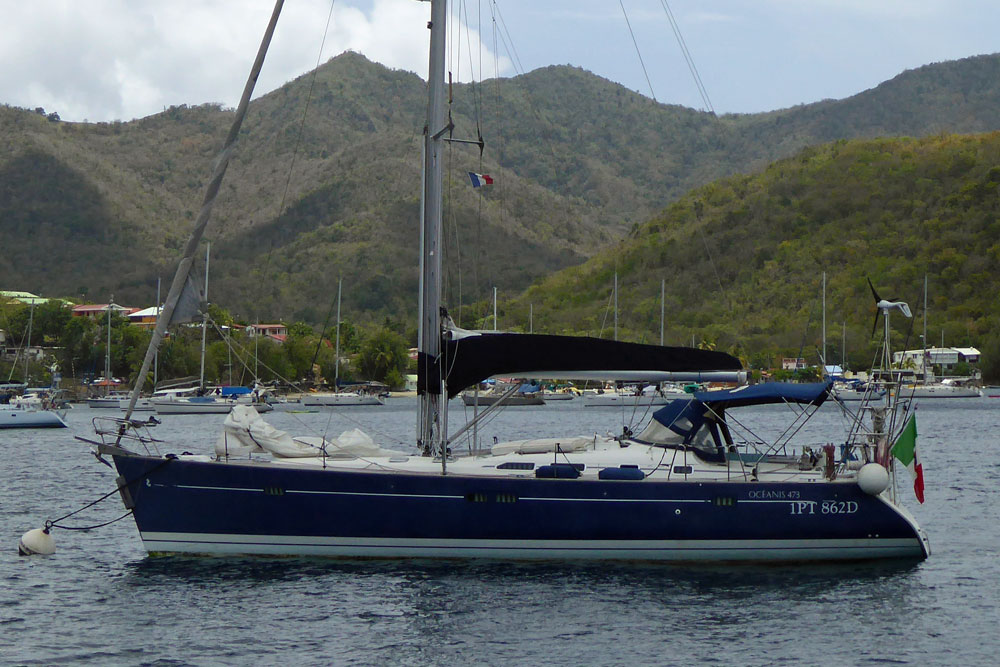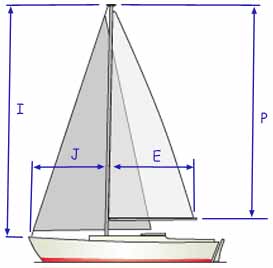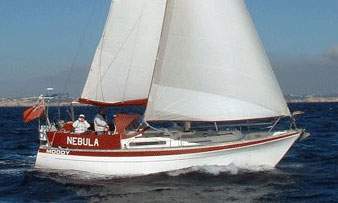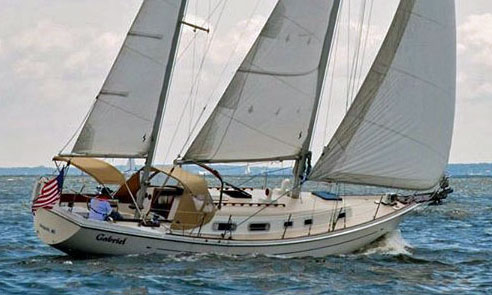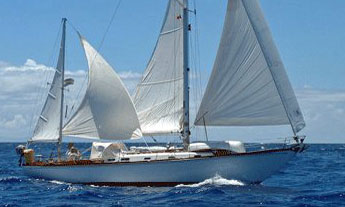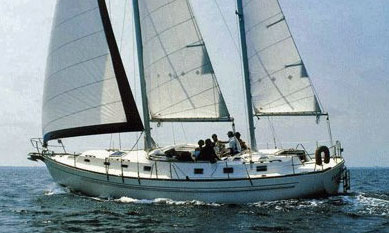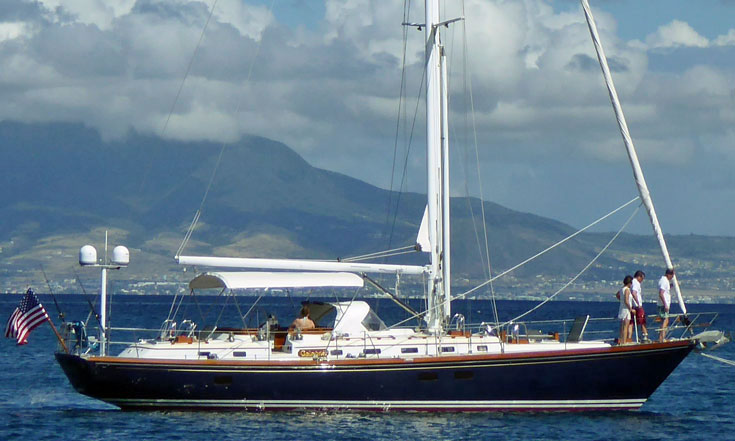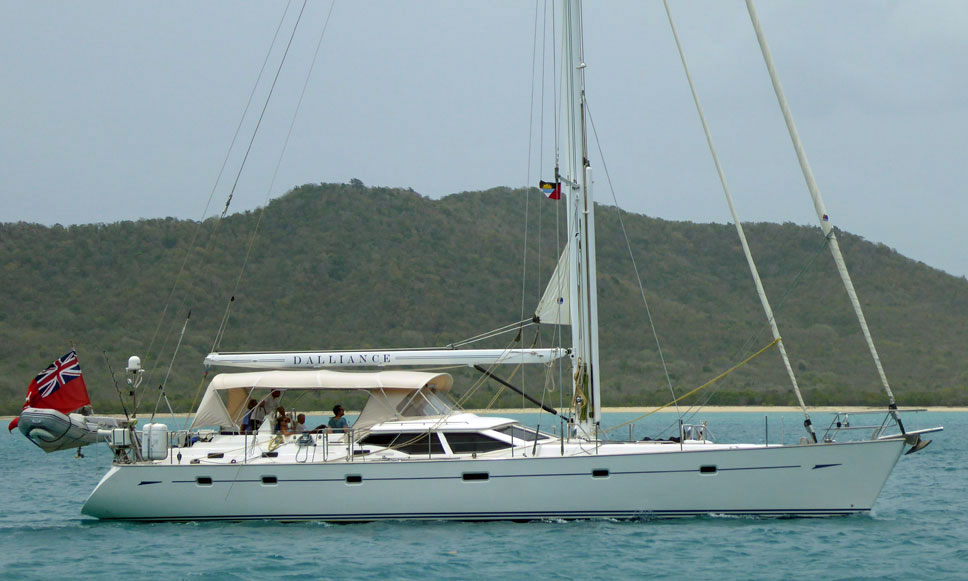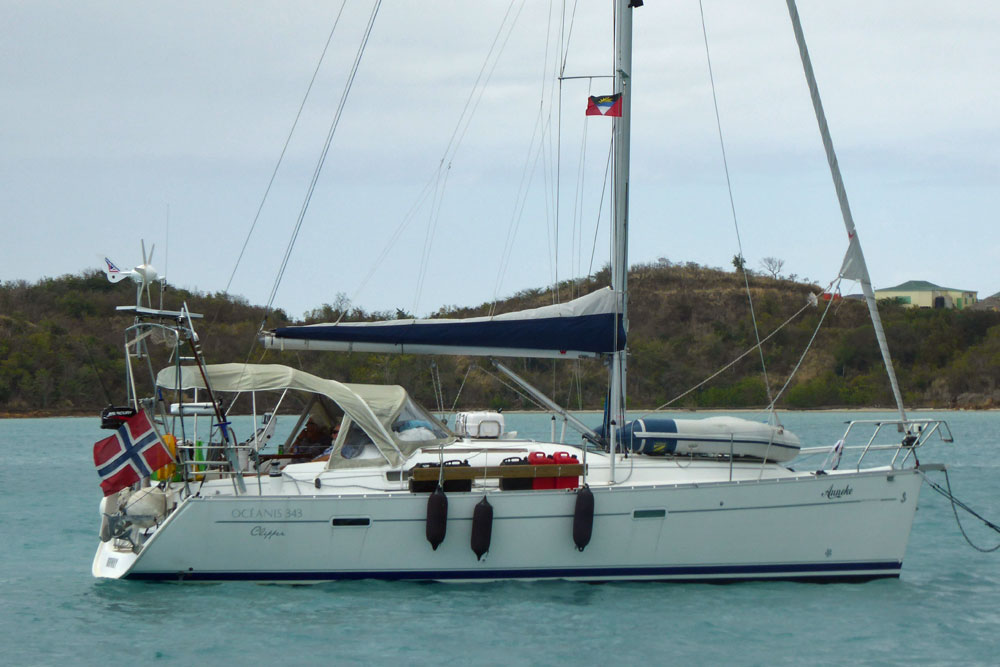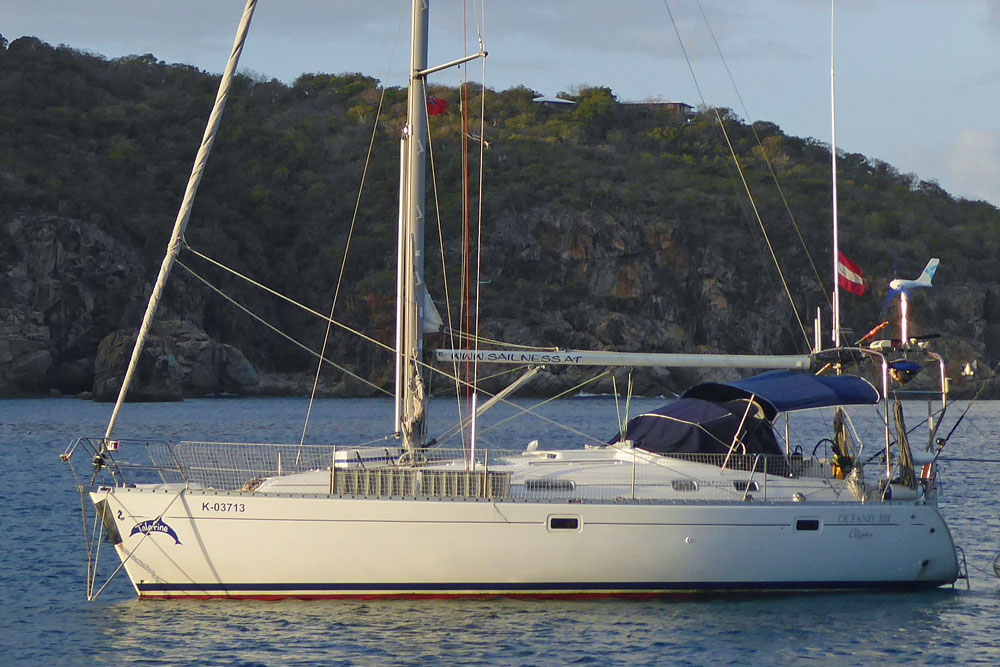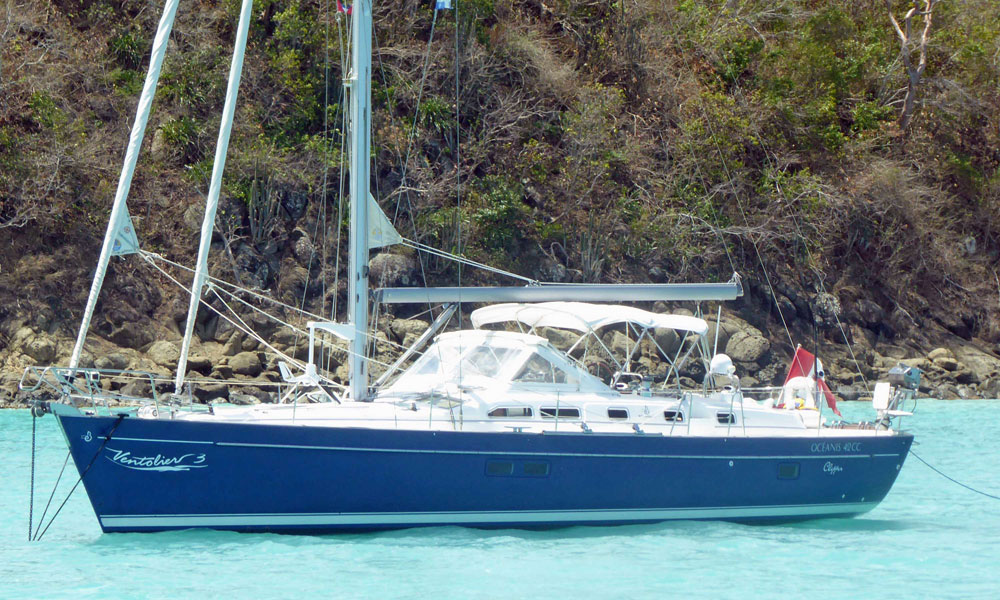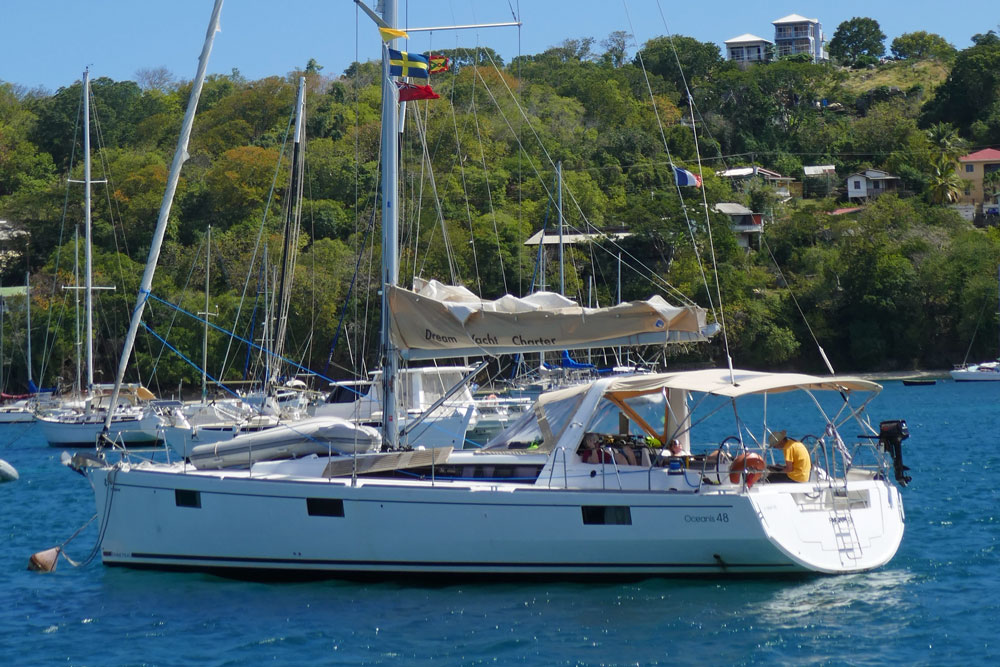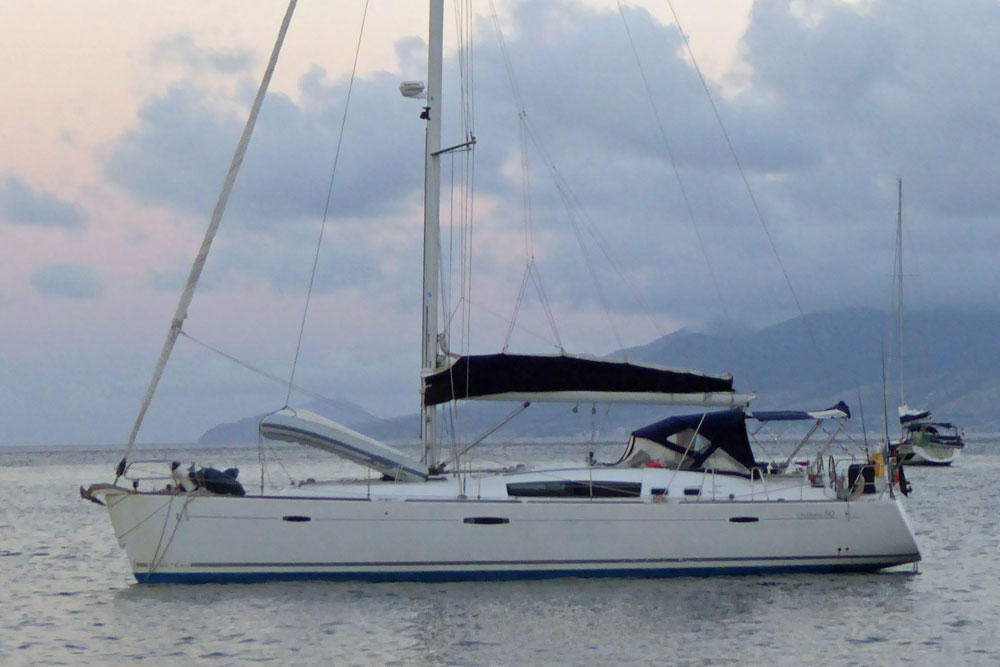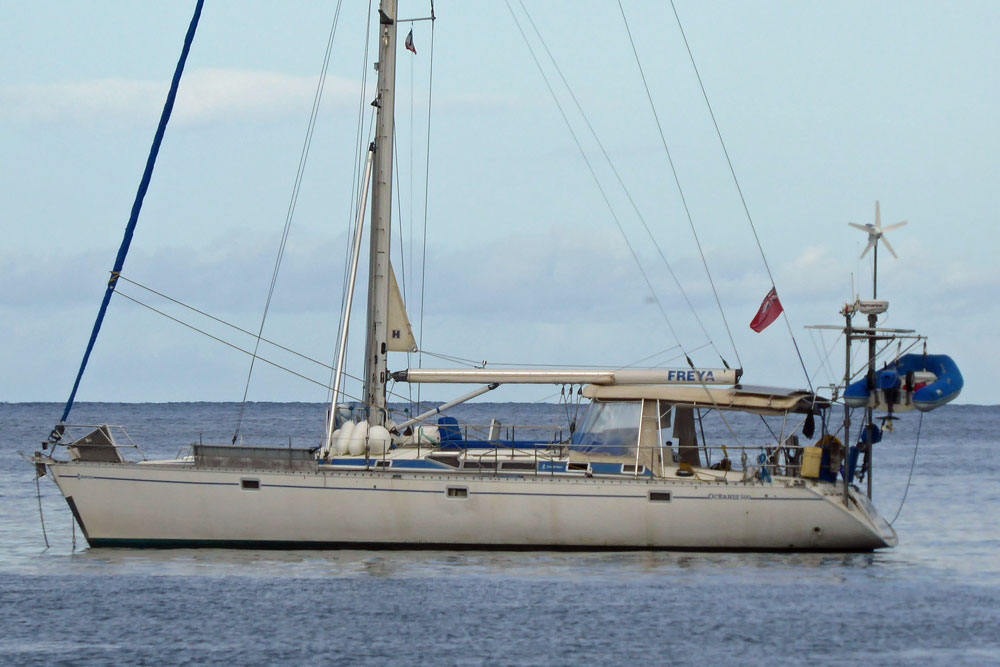- Home
- Cruising Yachts 45' to 50'
- Beneteau Oceanis 473
The Beneteau Oceanis 473 Sailboat
Specs & Key Performance Indicators
The Beneteau 473 is a popular model of cruising sailboat designed by the French naval architect group Groupe Finot and built by Beneteau in France. The 473 model was first introduced in the early 2000s and has since been recognized for its robust build and efficient sailing characteristics, making it a popular choice among cruising sailors.
Published Specification for the Beneteau Oceanis 473
Keel & Rudder Configuration: Bulb fin keel with spade rudder
Hull Material: GRP (Fibreglass)
Length Overall: 46'11" (14.3 m)
Waterline Length: 43'10" (13.4 m)
Beam: 14'2" (4.3 m)
Draft: 5'7" (1.7 m)
Rig Type: Masthead sloop
Displacement: 24,277 lb (11,012 kg)
Ballast: 8,000 lb (3,629 kg)
Water Tank Capacity: 156 US gallons (590 L)
Fuel Tank Capacity: 66.8 US gallons (253 L)
Hull Speed: Approximately 8.9 knots
Designer: Groupe Finot
Builder: Beneteau (France)
Year First Built: 2000
Year Last Built: 2005
Number Built: Over 400
Options & Alternatives
Draft Options
- Deep Draft: Approximately 6'7" (2.0 m)
- Shallow Draft: Approximately 5'7" (1.7 m)
Interior Layout Options
- Three-Cabin Layout: This layout featured three cabins and two heads, providing ample space for family or guests.
- Four-Cabin Layout: This layout included four cabins and two heads, ideal for charter use or larger groups.
- Owner's Version: This layout typically had a larger owner's cabin with an en-suite head, along with two additional cabins and a second head.
Beneteau Oceanis Clipper 473
This version was marketed with the 'Clipper' designation, which typically included additional cruising features and equipment as standard, such as upgraded navigation systems and enhanced interior finishes.
Sail Areas & Rig Dimensions
Sail Areas
- Mainsail Area: 410ft2 (38.06 m²)
- Genoa Area (140%): 505ft2 (46.89 m²)
- Total Sail Area: 914ft2 (84.95 m²)
Rig Dimensions
- I (foretriangle height): 55'5" (16.90 m)
- J (foretriangle base): 18'3" (5.55 m)
- P (mainsail luff): 48'0" (14.64 m)
- E (mainsail foot): 17'1" (5.20 m)
Published Design Ratios
The Key Performance Indicators (KPIs)
- Sail Area/Displacement Ratio: 17.5
- Ballast/Displacement Ratio: 33.6%
- Displacement/Length Ratio: 129
- Comfort Ratio: 24.6
- Capsize Screening Formula: 1.9
The following analysis of the primary design ratios gives an indication of the boat's likely sailing characteristics, but see the 'Notes of Caution' that follow below:
- With a Sail Area/Displacement Ratio of 17.5, the boat falls within the range that suggests reasonably good performance, highlighting its adequate power for various sailing conditions while not reaching the high-performance threshold of boats having a ratio of 20 and over.
- The Ballast/Displacement Ratio sits at 33.6, which does not reach the stiffer rating of 40 or more, indicating a somewhat less stiff configuration that might not stand up to the wind as robustly as heavier ballasted boats. Importantly, the placement of ballast, which isn't factored into this ratio, plays a critical role in actual performance and stability. The 473, having a bulb keel is a good example of the limitation of this ratio. As a result of the low distribution of her ballast she will be a good deal stiffer than the published Ballast/Displacement Ratio would suggest.
- The Displacement/Length Ratio of 129 places the Beneteau 473 in the Light Displacement category, suggesting the boat is designed for speed and efficient sailing without requiring a substantial sail area to achieve its hull speed.
- The Comfort Ratio is measured at 24.6, positioning this model within the moderate stability range typical of coastal cruisers. It promises a balance of comfort and responsiveness, though it might not match the comfort levels of heavier bluewater boats.
- With a Capsize Screening Formula result of 1.9, the design underlines a sturdy build with good blue water potential, indicating a lower vulnerability to capsizing.
Design Ratios: Notes of Caution...
- The Sail Area/Displacement Ratio (SA/D): This ratio provides an estimate of the sail power relative to the boat's weight, which can indicate potential speed in various wind conditions. But it doesn't account for the efficiency of the sail plan, the rigging, or the skill of the crew. Real-world performance can vary significantly based on these factors.
- The Ballast/Displacement Ratio (B/D): This ratio gives an idea of the boat's stability and stiffness, which is crucial for handling and safety. But it doesn't consider the distribution of the ballast or the hull shape, both of which can greatly affect stability. A high B/D ratio alone doesn't guarantee a stable boat if the ballast is poorly distributed.
- The Displacement/Length Ratio (D/L): This ratio helps predict the boat's speed potential and its behaviour in different sea conditions. But it doesn't account for the hull design or the boat's overall weight distribution. Two boats with the same D/L ratio can perform very differently if their hull shapes are different.
- The Comfort Ratio (CR): This ratio estimates the boat's motion comfort in a seaway, which is important for long passages. But it doesn't consider the boat's interior layout, which can also affect comfort. Additionally, personal tolerance to motion varies, so a boat that is comfortable for one person might not be for another.
- The Capsize Screening Formula (CSF): This formula assesses the likelihood of a boat capsizing in heavy seas, which is critical for offshore safety. But it doesn't take into account the boat's handling characteristics or the skill of the crew. A boat with a low CSF can still capsize if poorly handled in severe conditions.
General Limitations
- Static Nature: These ratios are static measurements and don't account for dynamic factors like wave action, wind gusts, or crew actions.
- Simplification: They simplify complex interactions into single numbers, which can be misleading. Real-world performance is influenced by a multitude of factors that these ratios can't fully capture.
- Context: The context in which the boat is used (e.g., coastal cruising vs. offshore racing) can greatly affect how these ratios should be interpreted.
In summary, while these ratios provide valuable insights into the theoretical performance characteristics of a sailboat, they should be used as part of a broader assessment that includes practical experience, sea trials, and expert advice.
More Specs & Key Performance Indicators for Popular Cruising Boats
The above text was drafted by sailboat-cruising.com using GPT-4 (OpenAI’s large-scale language-generation model) as a research assistant to develop source material; we believe it to be accurate to the best of our knowledge.
Other sailboats in the Beneteau 'Oceanis' product range:
.........................
I wrote this article using GPT-4, OpenAI’s large-scale language-generation model, as a research assistant to gather information, summarize research findings, and provide suggestions for the content and structure of the article.
Dick McClary, creator and owner of sailboat-cruising.com
.........................
Recent Articles
-
Is Marine SSB Still Used?
Apr 15, 25 02:05 PM
You'll find the answer to this and other marine SSB-related questions right here... -
Is An SSB Marine Radio Installation Worth Having on Your Sailboat?
Apr 14, 25 02:31 PM
SSB marine radio is expensive to buy and install, but remains the bluewater sailors' favourite means of long-range communication, and here's why -
Correct VHF Radio Procedure: Your Questions Answered
Apr 14, 25 08:37 AM
Got a question about correct VHF radio procedure? Odds are you'll find your answer here...
